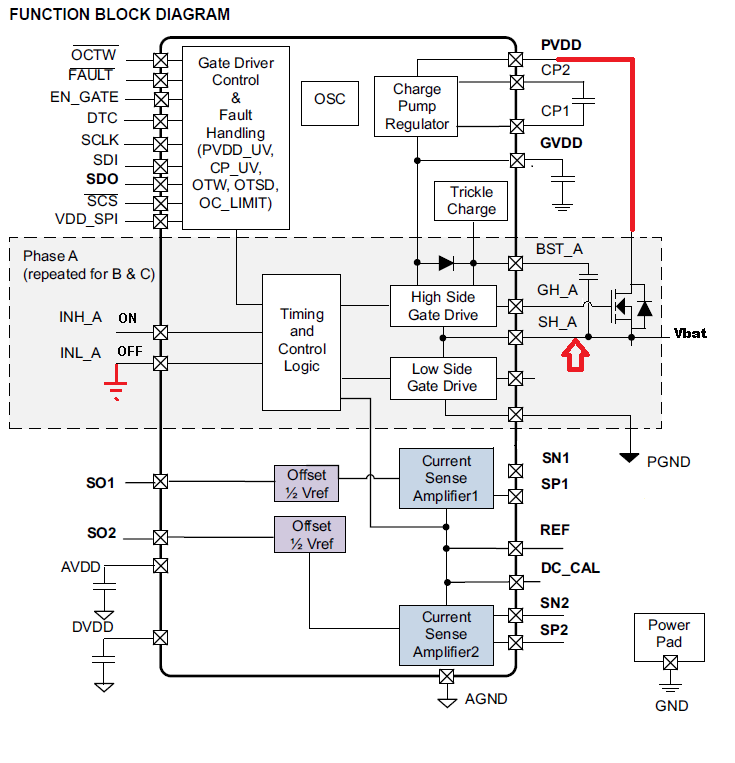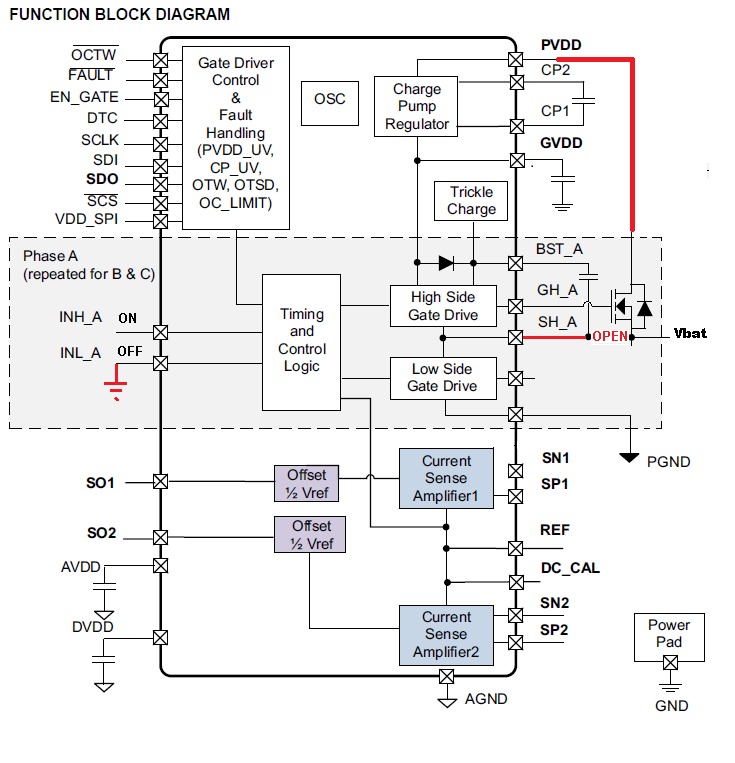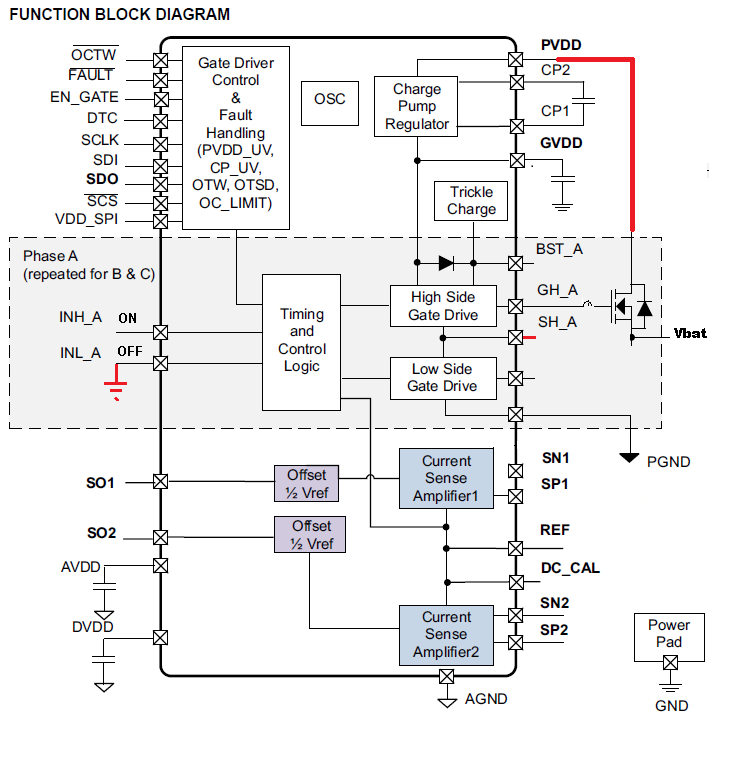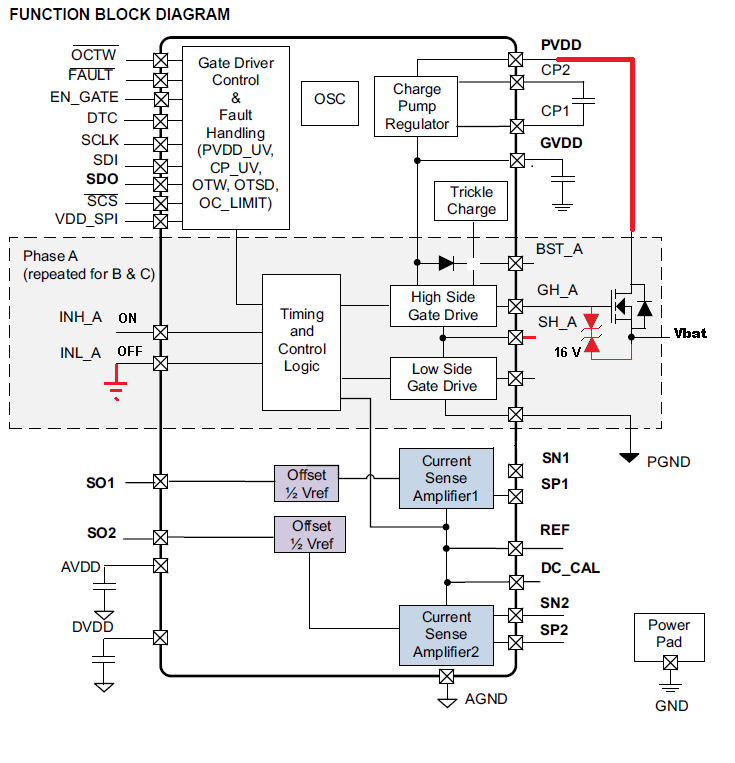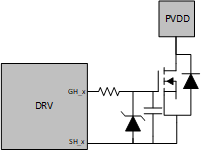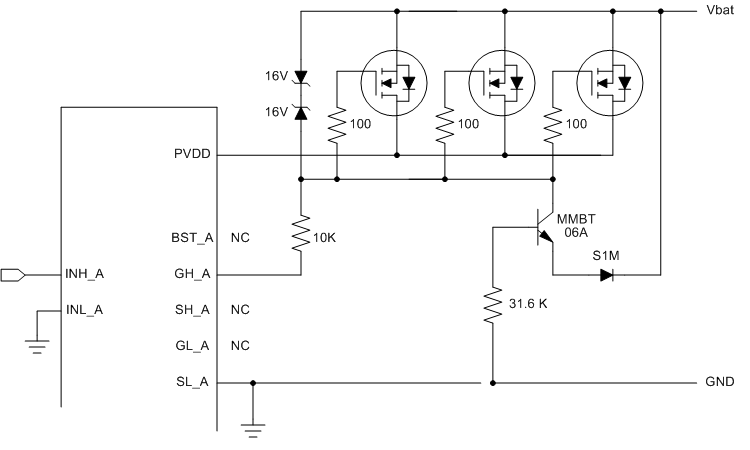A while ago I asked if the DRV8303 could supply gate drive for a reverse polarity protection connected FET. When power of the correct polarity is applied, the substrate diode of the FET power up the circuit. The driver chip then turns on the FET and shorts out the substrate diode to reduce the power lost. The circuit works as planned when correct polarity is applied but fails under reverse polarity. The trace from Vbat to SH_A burns up and the chip smokes.It seems the SH_A pin to ground cannot handle reverse voltage. I replaced the driver chip and left the connection from SH_A to the BST cap open and the gate drive still works and the circuit can handle reverse voltage without a problem. When i connected the BST cap to the SH_A pin but left the connection to Vbat open the gate voltage would only rise to 1.4 v.olts with greater that 6 volts applied on Vbat. When the BST cap was removed from the circuit the gate voltage could then rise to a level that turned on the FET (Vgs = ~11 V). Any thoughts on this implementation of the chip? Also why is the gate voltage limited to 1.4 volts ( 2 diode drops?) ?
-
Ask a related question
What is a related question?A related question is a question created from another question. When the related question is created, it will be automatically linked to the original question.



